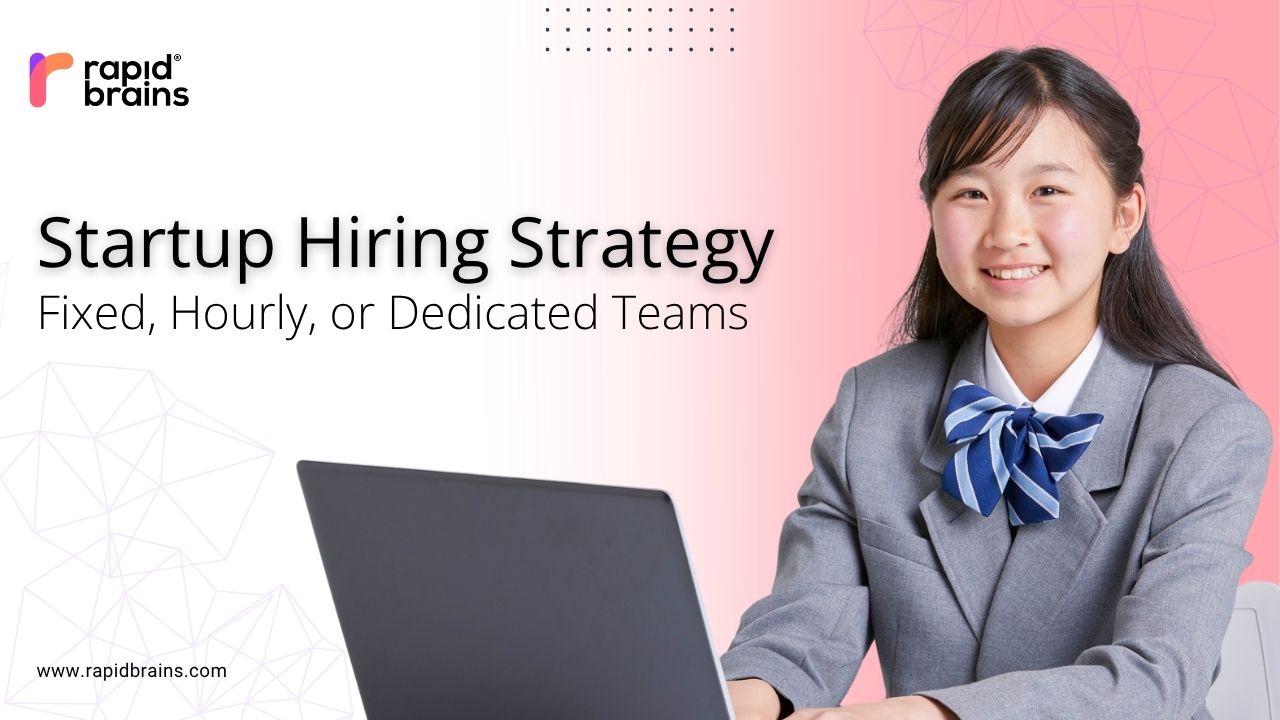
Building a successful business requires a sound Startup Hiring Strategy, particularly when every choice matters, from hiring the best team to developing a product. Hiring the right people at the right time can make or break your growth in a startup, which moves quickly. Your company is built on your team, and how you onboard them is just as crucial as who you select. One important choice is how to hire developers: should you create a specialised team, pay on an hourly basis, or use a fixed price model? Your startup’s objectives, financial constraints, and the rate at which your project must progress will all influence your decision.
1. Fixed Price Model – Simple and Predictable
In the early stages of development, the fixed price vs. hourly rate debate is essential to creating a wise Startup Hiring Strategy. When your startup has a clear idea of the project’s scope, timeline, and end products, a fixed price model works best. It guarantees cost predictability, which aids in budgeting and helps you steer clear of unforeseen costs. Startups with tight budgets and little funding will benefit greatly from this.
This model may be inflexible, though. It can be challenging and costly to adapt your project if it changes, such as by adding new features or changing the design. For startups developing MVPs or testing novel ideas, where flexibility and iteration are crucial, this becomes problematic. Despite the uncertainty, hourly models’ flexibility may provide better value in these situations.
Advantages:
- If your project has a clear beginning and end-like a simple website or feature-it works well.
- When you already know exactly what features you want in your MVP, this model helps you get it done quickly.
- Fixing the price before the work starts makes it easier to stick to your budget without worrying about extra costs later.
Disadvantages:
- If you want to change something mid-project, it’s usually complicated and may delay delivery.
- Any extra features or updates not included in the original plan will cost more.
- Since the team plans everything from the start, they allow little room for back-and-forth or flexibility for brainstorming and feedback during development.
2. Hourly Model – Flexible and Ongoing
The hourly rate model is more flexible compared to fixed pricing. You pay for the actual hours the developer works, which means you can easily make changes, try out new ideas, or shift your priorities as your project moves forward. This is great for startups that are still testing their product or trying to find what works best in the market. You don’t need to have everything figured out from the start. However, if you’re not careful, the hours—and the cost—can add up quickly. Without proper tracking, you might end up spending more than planned, which can make budgeting difficult in the long run.
Advantages:
- If your project needs frequent changes, small tweaks, or regular improvements, this model works well.
- It’s ideal when you’re still polishing your product, fixing issues, or trying out new features.
- If you’re still figuring out the best version of your product, hourly hiring gives you room to experiment.
Disadvantages:
- If you don’t keep track of the hours properly, the overall cost can go much higher than expected.
- You have to closely monitor how much time is spent on each task to make sure you’re using your budget wisely.
- Since work is billed by the hour, it’s harder to predict the total cost at the beginning of the project.
3. Dedicated Hiring – Long-Term and Scalable
Hiring a dedicated development team is a smart Startup Hiring Strategy as your startup grows. Like full-time team members, these developers only work on your project; they don’t have to worry about payroll, human resources, or office space. Faster delivery, higher quality, and team alignment are the long-term benefits that outweigh the setup time and monthly cost. This model supports agile workflows and maintains consistent and scalable growth, making it perfect for large products or continuous development.
Advantages;
- This model is perfect if your startup needs ongoing work, regular updates, or continuous product improvements over time.
- If you’re growing fast and need a reliable team that understands your product, a dedicated team can help you move faster and stay focused.
- You manage the developers directly, assign tasks, set priorities, and communicate with them just like your own in-house team.
Disadvantages:
- To make this model worth the investment, you should have regular tasks or features to work on.
- You’ll need to pay a fixed monthly fee, even during slower periods when there might be less work.
- There’s an onboarding phase where the team gets familiar with your product, tools, and workflow before they become fully productive.
Choosing The Right Startup Hiring Strategy
Your recruitment strategy for startups depends on where you are in your product journey:
| STAGE | RECOMMENDED MODEL | WHY |
| MVP/Prototype | Fixed Price | Defined Scope, Limited budget |
| Iteration & Testing | Hourly Rate | Frequent changes, Flexibility needed |
| Growth & Scaling | Dedicated Team | Long-term value, Team scalability |
Why Startups Choose RapidBrains
At RapidBrains, we help startups choose the right hiring model. Whether you need a fixed-cost project, flexible hourly help, or are ready for a dedicated development team, we make it easy to hire developers for startups. We connect you with pre-vetted global talent quickly and affordably. Our approach is startup-friendly, fast, and affordable—designed to support your perfect recruitment strategy for startups.
Conclusion
There’s no one-size-fits-all startup hiring strategy. But choosing the right model-fixed price, hourly rate, or dedicated hiring can save you time, money, and development stress. If you’re unsure where to start, RapidBrains is here to help. Let us match you with the right talent, using the right model, for your unique startup journey.




